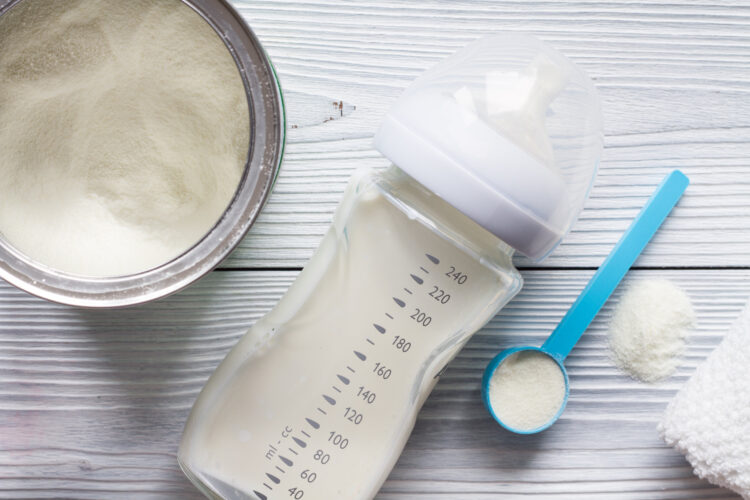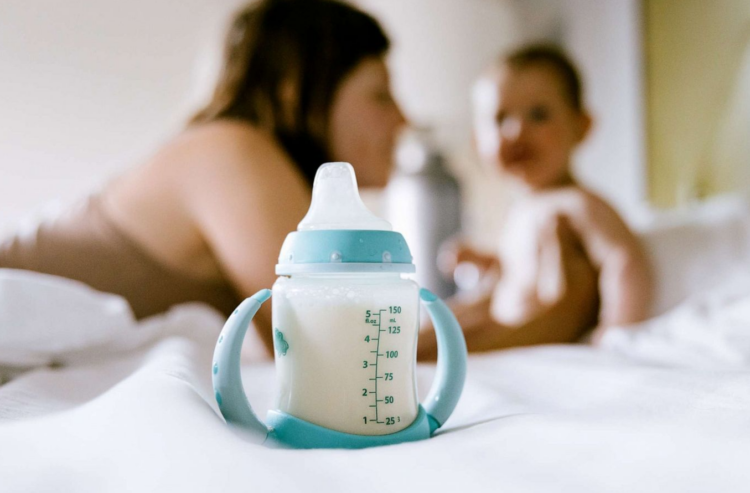Although breastfeeding is the preferred method of feeding infants, it may not be an option for all mothers. In India, where traditional beliefs and cultural norms still have a significant influence on child-rearing practices, mothers may face additional challenges in transitioning from breastfeeding to formula feeding.
You can take the following actions found in this article to ensure the transfer goes as smoothly as possible.
Table of Contents
Introduce the formula progressively

To ensure a smooth transition, it is important to introduce the formula gradually. The Holle Goat Stage formula, made with organic goat milk, can be a good choice for Indian mothers who want to supplement or replace breastfeeding. It is easily digestible and can provide the necessary nutrients for a baby’s growth and development.
Indian mothers can start by replacing one feeding per day with the Holle Goat Stage formula and gradually increasing the number of feedings over time. This will allow the baby’s digestive system to adapt to the new formula without causing any discomfort or digestive issues.
It is important to prepare the formula according to the directions on the package to ensure that the baby receives the proper nutrition. In India, where water quality can be a concern, it is important to use safe, clean water when preparing it.
Keep an eye out for indicators of hunger and satiety
It’s crucial to watch your baby’s symptoms of hunger and fullness when introducing the formula. In addition, it’s critical to pay attention to your baby’s cues because they may require more or less formula than what the recommendations on the package suggest. For example, rooting, sucking on their fists, and acting fussy or anxious indicate hunger.
When a child is complete, they may slow down or stop eating, turn away from the bottle, or start to nod off.
Maintain regular feeding schedules and dosages

Once you’ve created a feeding schedule, try to be as common as possible with feeding times and quantities. Knowing when to anticipate their next feeding will make your baby feel secure and establish a routine. It’s also crucial to make the formula according to the directions on the package.
Comfort and support the client
Switching from nursing to formula feeding can be emotional for you and your baby.
Your baby might miss the solace of breastfeeding, and you could experience regret or sadness about being unable to do so. You can provide comfort and support by keeping your baby close, making eye contact, and chatting softly while feeding them. If you’re experiencing emotional difficulty, getting help from family, friends, or a healthcare professional is crucial.
Track your infant’s weight and development
Monitoring your baby’s weight and development when you switch to formula feeding will help
you ensure they receive the required nutrition. Make sure to arrange routine checkups with your child’s doctor and bring up any worries or queries you have concerning eating and development.
Choosing the Right Formula for Your Baby

Selecting the appropriate formula for your baby is crucial for their growth and development. Although Holle Goat Milk Formula Stage 1 is an excellent choice, it’s essential to consider other factors like allergies, sensitivities, and individual needs.
Consult your pediatrician before introducing any formula to your infant. They can guide you on the most suitable formula for your baby based on their nutritional requirements and overall health. Moreover, don’t hesitate to seek advice from healthcare professionals or experienced parents to make an informed decision about your child’s nutrition.
Tips for Bottle Feeding Your Baby
Bottle feeding can be a new experience for both you and your baby, and it’s essential to create a comfortable environment for feeding. Always hold your baby in an upright position, supporting their head and neck.
Position the bottle at an angle to ensure the nipple is full of formula, which prevents your baby from swallowing air. It’s also vital to burp your baby regularly during feeds, as this can help to release trapped air and minimize the risk of gas and colic. Finally, practice proper bottle hygiene by sterilizing bottles and nipples before use, as well as washing your hands thoroughly.
Common Challenges

Some babies may experience challenges when transitioning from breastfeeding to formula feedings, such as gas, constipation, or spit-up. To manage these issues, try smaller, more frequent feedings and ensure your baby burps regularly.
Additionally, talk to your pediatrician about potentially switching to a different formula if your baby is having difficulty digesting the current one. It’s essential to be patient and allow your baby time to adjust to the new feeding method while seeking guidance from healthcare professionals if needed.
The Importance of Bonding
Bonding with your baby is crucial during feeding times, regardless of whether you’re breastfeeding or formula feeding. Maintaining skin-to-skin contact, talking softly, and making eye contact can help to create a strong emotional connection between you and your baby.
It’s also essential to involve your partner or other family members in the feeding process, as this can foster a supportive environment for your baby and promote secure attachment. Remember that the emotional bond you create with your child during feeding is just as important as the nutrition they receive.
Last Thoughts

In conclusion, if you follow these instructions, switching from breastfeeding to formula feeding with the Holle Goat Milk Formula Stage 1 can be an easy and successful process. Introduce the formula gradually, keep an eye out for your baby’s hunger and fullness cues, be consistent with feeding times and amounts, provide comfort and support, and keep an eye on your baby’s weight and development.
Remember that every baby is unique, so it could take some time to establish the proper formula ratio and feeding plan for you and your child. However, you may effectively switch to formula feeding and give your baby the nutrition they require to flourish if you are patient, persistent, and careful.
